
Last month, students at Amsterdam University's Academic Medical Center (AMC) voted the scientific writing course taught by SENSE members Ed Hull and Sally Hill to be one of the top three courses given by the AMC graduate school. Knowing how keen we all are to hear about the successes of our fellow SENSE members and knowing that many of us in SENSE regularly edit scientific papers, we caught up with Ed to find out more about his course. Maybe we could learn a thing or two about how to help our own clients!
Congratulations on being shortlisted for an award at AMC, Ed! Your course is clearly very successful; have you always been interested in teaching scientific writing?
Not always. My background is in biomedical engineering, and while working as an engineer at the Department of Experimental Surgery at the University of Groningen's teaching hospital back in 1974, I started correcting the English in my colleagues’ manuscripts. I soon discovered that, although the English was fine, the content was not logically organized and the writing was pompous and full of complex jargon, which made the research difficult to understand. I realized that the main problem was that this archaic yet orthodox style of writing had become standard.
This lack of clear and effective communication is particularly problematic in the health-related fields. Over the years, the ethical issues in scientific writing and publication became more evident to me, and I started developing a strategy to help to solve these problems. The result was a book that described how to write clear, readable scientific articles. In 2003, I was asked to teach scientific writing at AMC, and my book became the course material. The course and the book have been constantly evolving over the years and have been highly rated by the students.
How are your courses structured?
The course consists of lectures and workshop sessions. The students write their own text and get feedback from editor colleagues of mine: Charles Frink and Pauline Marx. This feedback is highly appreciated by all of the students. For many of them, this was the first time they had ever received feedback on their own writing. Hearing success stories from my students is always a kick. At the end of one of my courses in South Africa, the students started dancing. They said, ‘we have become a family.’ They loved working together and brainstorming on their texts.
How will you develop the course in the future?
Despite these excellent evaluations, the course will no longer be on offer to PhD students from January 2021 because the AMC and Vrije Universiteit (VUmc) graduate schools are merging. Sally and I want to continue teaching and are now working toward getting my course online. We want these to be up and running by early next year. We will be offering three levels of courses in scientific writing: for beginning researchers, for researchers writing for publication, and for researchers writing the Introduction and Discussion sections of their theses. I want to continue helping scientists write research papers because I believe they face big problems in this area.
In your experience, what common problems do research scientists face?
‘Publish or perish!’ This conflict of interest plagues all researchers and creates ethical problems because getting published becomes the priority. A common comment I hear from researchers is, ‘I have to make my little study sound big and important. Otherwise, it will not get published.’ This is a deliberate attempt to mislead readers. Although my students agree with my strategy to write a rigorous, credible, and transparent manuscript, their supervisors or the heads of their departments do not agree and put them under pressure to overemphasize the importance of their findings to increase their chances of getting published in a high-impact journal. When I ask, ‘why do your supervisors disagree with writing a credible paper?’ the answer is ‘well that’s just not the way we do it.’
How can language professionals help scientists to overcome these problems?
I think that authors’ editors are in a perfect position to reduce this ethical problem. But correcting the English language is not enough. We also need to ensure that the manuscript is transparent. That means making sure that the manuscript focuses on a specific scope and presents results that can be credibly generalized to a specific study population. Of course, the big challenge here will be to convince our clients that publishing a credible paper is more important than ‘publish or perish’. I am hoping to work with Sally to develop a course that is specially tailored to editors working with scientists. Watch this space!
Keep an eye on Ed’s website for up-to-date information on his upcoming online courses.
|
Blog post by: Sally Hill LinkedIn: sally-hill-nl Twitter: SciTexts |

Co-working: does it make SENSE?
Have you heard of co-working? Did you know the concept has been around for 15 years? The thought of co-working may either excite or terrify you: excite you because of the prospect of getting out of the office once in a while and meeting your colleagues or other professionals to collaborate, om mee te denken. Or terrify you because you possibly became a freelancer to avoid interacting with anybody face to face.
What is co-working?
Co-working is essentially about doing what you already do, but with others, in person. On 11 October in Amersfoort, SENSE member Lloyd Bingham will outline the mental health benefits of having some company and a change of scenery. He will argue that co-working can increase your productivity, while offering a space to share knowledge and ideas with your contemporaries, which could ultimately produce a better result for your clients.
Co-working with fellow linguists or other professionals?
Lloyd will explain the differences between working with fellow language professionals and working with professionals in other sectors. Both models offer their own benefits, and one might be a better fit for you than the other.
Co-working or coworking?
Perhaps the most important question is: with or without a hyphen? Supporters of no-hyphen include the esteemed Garner’s Modern English Usage. Supporters of retaining the hyphen include many of our esteemed SENSE colleagues. We know who we’d rather trust.
Sense co-working sessions are open to SENSE members only. Not a SENSE member yet? For a €80 you can benefit from SENSE membership until December 2021! For information on the benefits of SENSE membership, click here.

Copywriting is perhaps easier to do than it is to explain. But during his workshop on 17 September, creative director and copywriter Chris Baylis took on the challenge anyway.
Introducing his presentation with the statement that ‘Writing about music is like dancing about architecture’, Chris highlighted the difficulty of defining something as intuitively creative as copywriting. He also stressed that unlike editing and translation (which largely focus on applying traditional textual structures and rules), this commercial art form is about far more than dotting the ‘i’s and crossing the ‘t’s. In fact, rather than conforming to established expectations, conceptual copywriting should create an element of surprise by making unexpected, original connections that reward the reader or viewer with a new way of seeing or understanding something.
To show us how this works in practice, Chris (who has international creative awards coming out of his ears) reviewed some of his favourite work. In ‘Wake Up the Town’, he took the new Philips wake-up light to Longyearbyen, the northernmost settlement on earth, for the residents to try out. His thinking: if it worked for people there, it would work for anyone, anywhere. This kind of inspiration also requires perspiration: it was backed up by a hard-working, interactive campaign. Other bold ideas (such as the Adidas ‘There will be haters’ ad) demonstrated how to tackle a problem from a different angle, rewarding the consumer with an emotional boost, a smile or a wink of recognition.
Chris then took us on a quick tour of the different types of copywriting, from outstanding TV commercials to humble point-of-sale wobblers. He outlined the marketing process that extends from the development of the actual product or service all the way to the creation of the copy, art or design used to sell it. He discussed the value of creating tension, and of allowing our subconscious mind to go off for a wander until it suddenly comes back with the goods. He also stressed the need to keep refilling our personal creative bank with experiences, visuals and popular culture: valuable stuff you can draw on later, just as successful brands do. Other aspects he mentioned were the nature, commercial value and social impact of copywriting, and the rise of ‘purpose’ as a brand value.
Then it was our turn to get creative. Our mission was to come up with a headline and strapline for the new, all-electric, all-singing-and-dancing Volkswagen I.D. Buzz. This is a vehicle that manages to combine the nostalgic charm of the original camper van with the luxurious design of a zero-emissions 8-seater ride (one so futuristic that you don’t even need to drive it yourself). Briefs like this are guaranteed to get me squealing with delight, so I muted my mic and started darkening an A4 with one masterpiece after another. Then we came back together to reveal the fruits of our labours, under Chris’s gentle and respectful encouragement. Much as I loved my own ‘Conceived yesterday. Reborn tomorrow.’, I had to concede defeat to a strapline that I still can’t get out of my mind: ‘Good, clean fun’. Damn – now why didn’t I think of that?
This exercise showed how difficult it is to convey the essence of a product in just a few words. And although there’s no easy answer to the question, ‘How do you come up with an idea?’, Chris did offer some useful tips and reading suggestions, all of which illustrate the eternal truth: ‘Good copy doesn’t sell; it makes you want to buy.’
Want to boost your own copywriting skills? Check out the following resources:
- Sullivan, J. & Boches, E. (2016) Hey Whipple, Squeeze This! The Classic Guide to Creating Great Ads. John Wiley & Sons Inc.
- Sutherland, R. (2019) Alchemy: The Surprising Power of Ideas That Don't Make Sense. Ebury Publishing.
- Maslen, A. (2019) Persuasive Copywriting: Cut Through the Noise and Communicate With Impact. Kogan Page Ltd.
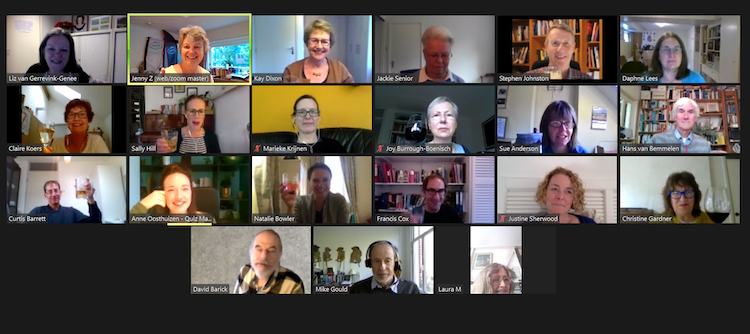
Gin o’clock came early on 25 September. I may have been a little nervous about participating in the SENSE Virtual Quiz night – my first ever event at SENSE ¬– but with a G&T in hand and faced with a very friendly gaggle of language professionals, it was all good.
I soon found myself in a break-out room/team with Mike Gould and Curtis Barrett, feeling utterly useless for the first round: ‘SENSE History’. Fortunately, Mike and Curtis saved the day. The second round, ‘Odd Englishes’, was starting to look more like a joint effort. My favourite new word is whoopensocker – I’ve been trying to sneak it into a sentence at every opportunity this week.
SIG and Social Events Coordinator Anne Oosthuizen’s initial plan to go five rounds proved too ambitious with this slightly unruly bunch of 24 contestants, and so we voted to decide the topic for the last round. ‘Literature’ won overwhelmingly, and at long last, I started to feel somewhat useful. This is a good thing when you’re a little on the competitive side. That person who wants to ‘win’ so badly that she ends up with the wrong contact lens prescription because she hazards guesses as the letters on the chart keep getting smaller? Yep, that’s me. Imagine my joy when I realized I might make myself useful in this round. Never mind that it was a stroke of pure luck that I had read some of these books – and that my rapidly deteriorating memory decided not to forsake me for once.
The quiz was beautifully put together, organized and moderated. Webmaster Jenny Zonneveld dealt with all the tech stuff and quickly checked the answers and totted up the numbers. Anne, who put together the very clever questions, joined the side rooms from time to time, graciously trying her best to keep a straight face while we flailed around in our, at times, desperate attempts to find the correct answers – or any answers for that matter.
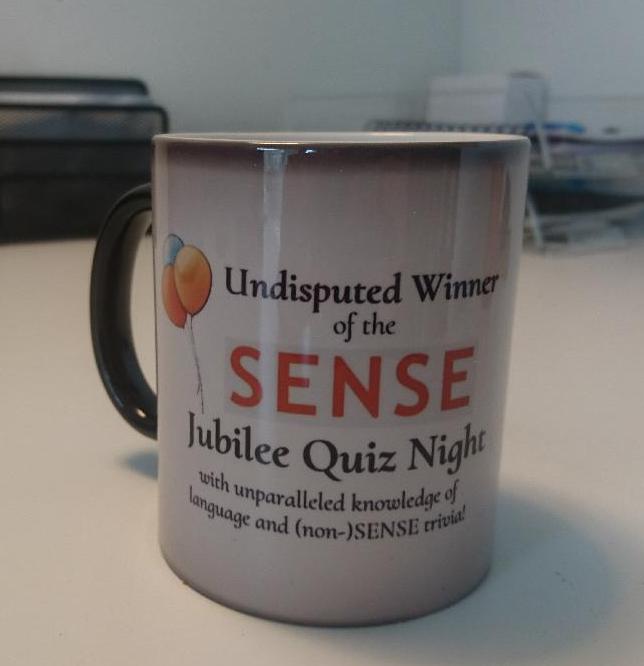
From all of us, a massive thank you to Anne and Jenny for organizing this fabulous start to the weekend!
![]()
Experience has shown that columns on the nitty-gritties of grammar can be considered either as a refreshing aide-mémoire to seasoned practitioners or as convenient support for newcomers to editing in need of compelling reasons for having made grammatical changes (especially when they are challenged by authors). In this blog post, the aspect of English usage I’m focusing on (with the help of some really smart authors) is the correct or preferred use of adjectives and their close cousins, the participles. Incorrect usage of these word classes can be considered gauche or clumsy – and possibly even damaging to an author’s or editor’s image. Mastering correct usage is therefore essential, whether you’re wanting to be regarded as an artful writer or showing an author’s words off to best effect. Hopefully the collective wisdom of the authorities cited will clear up any uncertainty you may have had on these questions.
Ordering adjectives correctly in strings
To ‘reveal all’ about the correct ordering of adjectives in strings, we have to start by considering the classes of adjective. Two classes are most commonly used:
- Classifying: annual event; cotton fabric; German academic; virgin olive oil; green solution (ie, environment-friendly); weekly newspaper. These adjectives tend to indicate the class or category to which a noun belongs. ‘Virgin olive oil’ is interesting because ‘olive’ is already limiting the oil to one class, but ‘virgin’ creates a subclass, differentiating the olive oil from non-virgin pressings. They are generally not gradable (an oven cannot be ‘fairly electric’), nor do they have comparative and superlative forms.
- Qualitative: tall gentleman; boring film; happy children; green container (colour). These adjectives are usually gradable (extremely boring) and have comparative and superlative forms: tall, taller, tallest; boring, more boring, most boring; happy, happier, happiest.
The general rule to apply is this: in a string of adjectives, the classifier should be placed closest to the noun it qualifies: tall French gentleman; rich silk fabric; colourful beach umbrella. Note the absence of a comma between the two classes of adjective: this is correct.
But what of a long green container? There are two points to consider here. First, two qualitatives are forming a string, so they should be separated by a comma (the same would apply to a string of classifiers, though these occur less frequently). Thus: long, green shipping container; chubby, gurgling Chinese infant.
Secondly, the reverse order of the qualifiers sounds unnatural: a green long container. But why? Well, the experts tell us that order is important, and offer more helpful guidelines:
- Usually we place an adjective that gives an opinion in front of one that is either classifying or qualitative: nice red dress; silly old man; horrible gold curtains.
- When three adjectives in a string comprise a qualitative, a classifier and a colour adjective, the usual order is qualitative + colour + classifying + noun: long white stretch limousine; stubby blue ceramic knife.
- In strings of multiple adjectives, the preferred order is generally: (1) quantity/number; (2) quality/opinion; (3) size; (4) age; (5) shape; (6) colour; (7) proper adjective; and (8) purpose/qualifier. For example (heaven forbid!): Many top-quality large blue aluminium-bladed kitchen knives were on display. (No commas here between the adjectives because they all belong to different classes.)
Adjectives ending in -able and -ible
One of the real dilemmas facing writers and editors having to deal with adjective formation is when to use either -able or -ible as a suffix. English is rather unhelpful with conventions here, but one fairly reliable rule of thumb is this. When the root is complete without the suffix, then the suffix is more likely to be -able. When the root is incomplete without the suffix, then the suffix is more likely to be -ible:
-able -ible
changeable feasible
commendable horrible
reliable reprehensible
remarkable sensible
saleable terrible
Compound adjectives: when to hyphenate?
How often don’t we read statements such as ‘He is well-versed in Dutch literature’ and ‘That beautifully-crafted figurine is Renaissance’. Hopefully, both will have been corrected, but if you’re wondering why they are incorrect, then this section is for you.
A compound adjective is a single adjective made up of more than one word (eg, free-range eggs; 50-page report; ill-fitting garment; one-year-old child; step-by-step explanation). In these examples, the compounds comprise combinations of determiner, adjective, noun, present participle, past participle, adverb and/or preposition. The words in a compound adjective are often linked by a hyphen (or hyphens) to show they are part of the same adjective, especially when they occur in the attributive position in front of the noun they modify. But note that in instances such as fully booked hotel compounding does not occur because the adverb fully ends in -ly and so there is much less likelihood of its being associated with the noun hotel.
When they appear in the predicative position (verb + object(s) or complement), adjectives are usually not compounded though there are exceptions (eg, He is old-fashioned; That idea seems ill-considered). Why the compounding? Consider this:
A man-eating buffalo versus
A man eating buffalo
In the first, buffalo is modified by the compound adjective man-eating to convey one meaning clearly; in the second, man is modified by the adjectival clause eating buffalo, conveying another meaning entirely.
When should we insert a hyphen? If you can use the word and between the two words, then a hyphen isn’t necessary. For example:
- She has a big blue book. We can say: She has a big and blue book. So no hyphen necessary. But what about a comma?
- He is a world famous singer. We cannot say: He is a world and famous singer. So a hyphen is necessary to join the words world and famous.
- Also, look at the following: It’s an old coal-mining town. Inserting a hyphen between the words old and coal would suggest a reference to a town that mines old coal. But it’s the town that is old, not the coal. Also, there should be no comma between old and coal-mining because they belong to different adjective classes.
By identifying and correcting each of these tricky aspects of adjective usage in texts, and armed with sound grammatical backup, you’ll convert your authors’ words into communications that will impress.
References
Kahn, J.E. (ed.). 1985. The right word at the right time: A guide to the English language and how to use it. Reader’s Digest.
New Hart’s Rules: The Oxford style guide. 2014. 2nd edition. OUP.
New Oxford Dictionary for Writers and Editors. 2014. 2nd edition. OUP.
Seely, J. 2009. Oxford A to Z of grammar and punctuation. 2nd edition. OUP.
Yagoda, B. 2007. When you catch an adjective, kill it: The parts of speech, for better and/or worse. Broadway Books.
http://www.grammar.cl/english/compound-adjectives.htm
www.oxforddictionaries.com/words/qualitative-and-classifying-adjectives
This article was originally published in eSense 42 (2016).

On 3 September, SENSE member and freelance academic editor Dr Claire Bacon joined the Eastern SIG via Zoom from her home in Germany to talk about her experience writing a blog and how it helped her expand her client base. Armed with this new knowledge, Eastern SIG members Anne Oosthuizen and Danielle Carter share their thoughts on the benefits of professional blogging.
Anne Oosthuizen:
To be frank, I never really understood blogging. To me, it seemed like a load of hard work for… yes, what for, exactly? The way Dr Claire Bacon put it, the benefits of keeping a blog can actually be seen as threefold:
- increasing credibility within your professional network;
- boosting online visibility and website traffic (and, with this, your ‘findability’);
- strengthening your own knowledge on topical subject matter.
It was especially this last point that appealed to me: blogging, not necessarily for others, but for yourself. Turning those little research sprees we go on – because we all do, don’t we? – into concrete, durable knowledge, there for you to refer back to and for others to find. Once you’ve built up a little library of posts, you are free to repurpose those by resharing or elaborating upon them. That sort of takes care of my initial objection, namely the supposed workload. Another very good point Claire made with regards to this is that consistency is more important than frequency: consistency shows commitment and dependability. You won’t necessarily have to post something every week. Even if you only have time to write a blog once every three months; if you do it consistently, you showcase stability. That’s a lot better than over-enthusiastically starting a weekly blog, only to stop again after two months because it turns out that isn’t sustainable for you.
I’m not super techy, so aside from some light SEO stuff, I never really invested much energy into optimising my website to climb up the search results ladder. Therefore, the fact that search engines favour new content was actually news to me. By blogging, you are effectively constantly updating your website – keeping it ‘fresh’. I saw my website merely as a landing page for a domain name I’d once bought when I registered at the Kamer van Koophandel: a stationary portfolio. I now cringe, thinking about how long my poor website has already just been sitting there, on the back bench of the internet. Whether I like it or not, half our lives take place online these days and there is really no excuse for an outdated online presence. Time for action.
Finally, I think Claire expected us to be less enthused by the argument of increased credibility among peers than we actually were. I can see why: if you’re just starting out, every other translator feels like a competitor. In fact, I think some language service providers never truly let go of that feeling. However, any member of SENSE will probably feel that colleagues are not just a fantastic potential support network but can actually be one of the greatest ways to generate business. Considering blogging as another way for me to connect with my peers, and for my peers to connect with me has actually been the deciding factor for me – this is why I now solemnly swear to give it a go: I shall blog. Stay tuned.
Danielle Carter:
I am a novice blogger, but I have some big ambitions. I have a running list of over fifty blog post ideas in a Word document on my desktop that shadows over my daily agenda, waiting for me to have more time to write. Dr. Claire Bacon’s presentation on attracting the clients you want by blogging made me think about blogging from a different perspective. At first, I was soothed by the thought that no one was reading my blog (I was scared, okay?), but Claire pointed out that you should be writing specifically for the client that you want. What are they searching for? What are their questions? How can you demonstrate your value and even – gasp! – solve their problems for free via your blog posts?
So I have to admit that at least some people are reading my blog and that this is actually a good thing, especially if they’re the ‘right’ people: you can show (not tell) your clients what you know, build trust with your potential clients and increase your visibility among your peers – who can also send you more work.
Claire highlighted that writing blog posts can be a fantastic form of ‘knowledge consolidation’, meaning that you confirm your own knowledge through research and writing. This has been my main approach in writing blog posts over the past year or so. I’ve always been a good investigator and I love poking around on the internet, gathering resources and generally staying up-to-date in my fields. To me, writing blog posts has become a way to give myself time to research things as thoroughly as I’d like to… while also feeling productive because then I have a tangible result – a blog post – to publish at the end. But it’s also good to know that there are other approaches to coming up with blog post ideas (like thinking about what kinds of questions your clients might have), and other purposes for maintaining a blog.
My other main takeaway (in addition to writing for your ideal clients) was about sharing and resharing your blog content. Although I’ve written a handful of blog posts already, I was wary of being annoying and posting my content across social media platforms too many times. Claire has a nice spreadsheet system (I love spreadsheets) to reshare her blog posts on various media; the main highlight for me was that she writes a different accompanying blurb each time she shares a blog post. That way, she underscores different aspects of the blog, frames the blog into different contexts to show its relevance to various potential clients and allows new followers to view content that they may have missed. Resharing content with different information each time can also help those followers who never actually click on the link; even if they don’t read the whole blog post, they’ll eventually get enough snippets to gain the knowledge or insight they need from your post – at the very least, they’ll be less annoyed by your regular posting.
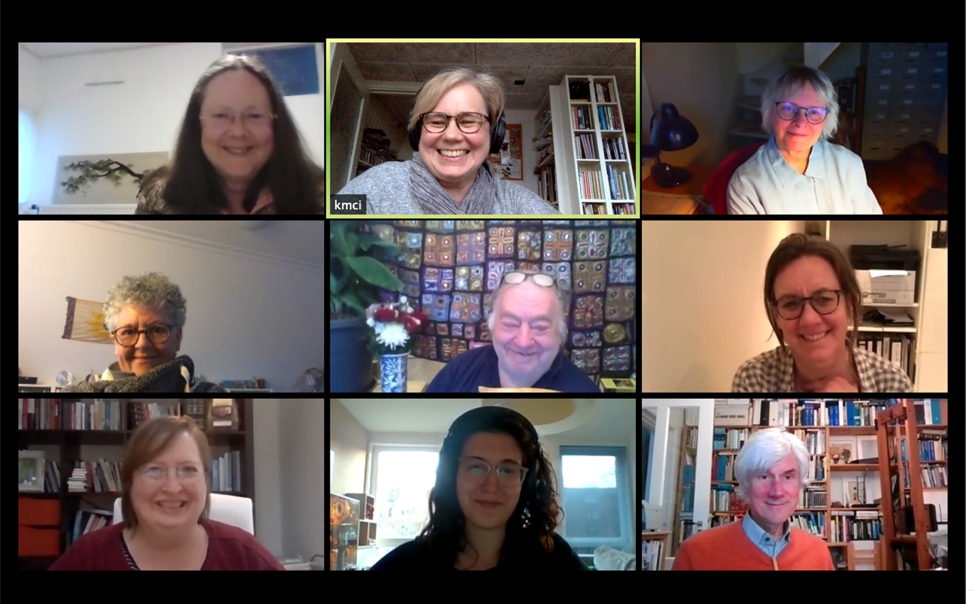
For me, an American child of the 1970-80s, the name ‘Zoom’ will always bring up fuzzy memories of the child-led television program on the Public Broadcasting System. Zoom was a shoestring production, a half-hour compendium of zingy tweens telling jokes and making crafts in a largely bare studio. For British people, imagine a chaotic Blue Peter with much lower production values and no Helen Skelton demonstrating shockingly professional crafts. As a child, I found Zoom maddening, inspiring and occasionally dull. Some segments spoke to my soul. Others dragged on and on.
Modern Zoom retains some of that chaotic energy. Some discussions flow; others are disrupted. It takes time to get used to the medium. There is often a slight lag in sound as people begin to speak that makes discussions difficult. It’s hard to read the body language of all the people in their little boxes on screen, meaning that it’s hard to read the cues about when someone is about to join a discussion.
To combat this disjointed and disorienting aspect, I tend to start Zoom SIG meetings with a check-in from each attendee. I learned to do this at work, where it is a standard element of our management team meetings. Checking in with people’s mental states, even if only briefly, turns out to be a very effective way to defuse tensions. It clears the air before we get down to business. In the context of the Covid-19 pandemic, checking in seems especially crucial. We are all missing human contact in anxious times. It’s important to be professional, but if personal struggles are affecting your ability to work, they ARE professional struggles. Sharing may not solve them, but it can reduce their anxious power.
SIG Far North has had three online Zoom meet-ups since April, and these meetings have seen a progression from substantial upheaval to a new normal.
At the 13 April meet-up, attendees were doing reasonably well work-wise, given the sudden lockdown. The amount of work attendees were getting in varied with their specialization. Those in the legal and financial world were seeing a major slow-down, although there were signs of improvement by mid-April. Those in education and healthcare were working steadily, in some cases on Covid-19-related communications, in others on medical work related to Covid-19. Those who teach were working to shift their work online and meeting the challenges associated with that shift. Everyone mercifully seemed in good health and spirits, whether they were locked down in a cottage on the weide or an apartment in the city. This meeting was also the one where Ragini Werner announced her retirement. You can read more about her career and future plans here. We all wish Gini a wonderful retirement!
By our next meet-up on 29 June, all attendees were doing well with work. Because Zoom allows SENSE members from other regions of the country to attend distant SIGs, we had two legal translators attending (a 100% increase from our usual number). This led to a really interesting discussion about how the need to move legal proceedings online was changing the world for legal translators: from an accelerated online certification system to the sometimes-choppy transition to digital courtrooms. Ammerins Moss-de Boer subsequently wrote about this for the SENSE blog. We also discussed the SENSE online conference. People noted that they had really liked the chat function as a way of posing questions to the speaker, especially being able to ‘like’ questions asked by others. Many had missed the informal face-to-face aspects of the meeting, although the closing Pub Quiz came in for high praise. Some other positive aspects of the online world were noted, including that it was far easier to get PE points and to invite speakers from a greater distance away.
While the June meeting had lower attendance, with nine attendees, it was the first Zoom meeting I have attended with a flowing dynamic. Instead of needing a moderator to make sure that everyone got a chance to speak, each attendee naturally identified a break point in their own story and passed the baton to another member. Once everyone had checked in, the discussion simply flowed. It was a pleasure to host.
By the 31 August meeting, everyone was getting so much work that I had many cancellations and only three attendees. The result was a much less formal meeting, but a good one, with a long discussion about the benefits and drawbacks of online meetings. We eventually fell into a conversation about the current state of America, and whether its individualism and chaotic energy are capable of fostering community.
Not unlike Zoom, in all its incarnations.

(via Getty Images)
As part of the #SENSE2020 Jubilee Workshop series, our very own Professional Development Coordinator Matthew Curlewis will be offering language professionals a chance to work on their writing skills. Rather than a one-off event like the workshop Ros Schwartz facilitated in January of 2020, Matthew’s Stretch & Tone workshop cycle will be a six-week process, allowing attendees to practice and hone their skills along the way. John Linnegar asks him a few questions about the workshop and the format.
JL: Some may feel registering for your course is a big time commitment. Others may be thinking twice about spending €180. So what would your response be to convince them to register?
MC: This workshop is about the process of writing; the ‘doing’ of it. Would you take one yoga class and then think you were done with yoga? Probably not. You might try different groups of classes in different styles – perhaps in Hatha, Iyengar and Bikram yoga, before settling on Kundalini yoga as your preferred technique – but your study of the other three will always have been useful to support your final choice.
The Writers’ Stretch & Tone workshop cycle loosens you up by having you write some fiction one week, a screenplay excerpt another, a poem another day – in a very similar manner – all these writings will work cumulatively, to improve your overall skills as a writer.
JL: What benefit, would you say, will attending your writing course have on a translator? And on an editor? Even, perhaps, a copywriter?
MC: When writing emerges at its best, people will say it ‘flows’. The words lead to sentences, which lead to paragraphs in a pleasing manner, and you are guided as a reader. Whether you’re translating or editing someone else’s writing, or whether you’re copywriting from scratch, ideally your writing should flow beautifully, rather than sounding awkward and haphazard, like an incompetent machine has done the translating.
JL: In January this year, we had a full-house workshop facilitated by Ros Schwartz (translator extraordinaire) about how improving your writing skills makes you a better translator. She had some powerful messages to share, and the impact of her approach among the attendees was overwhelmingly positive, inspiring, etc on the mainly translators who attended. Would you say that your course of workshops, and sharpening one's writing skills, will have the same effect?
MC: What we do in Writers’ Stretch & Tone workshops is get comfortable with letting our words come out, we get comfortable with covering empty pages with fresh new words, we find out how to make our words, our copy, and our writing, flow. At the end of the course, your ‘writing muscles’ will be stronger and more flexible, and you will feel fitter as a writer. As a result, you’ll be more comfortable taking on complex writing challenges.
Are you ready to stretch and tone your own writing skills? Sign up for Matthew’s workshop cycle on the Events page!
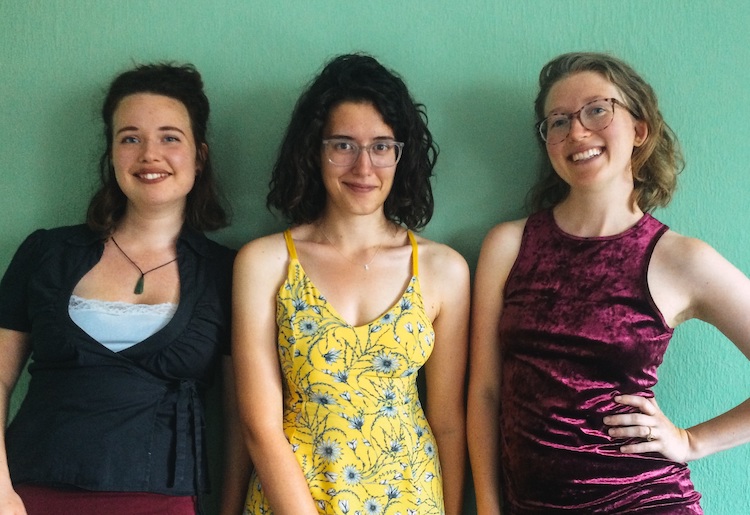
Starting out as a language professional can be a daunting experience. Connecting with people who are in the same boat can be a great way to navigate the (sometimes choppy!) waters of setting up a new business. SENSE members Danielle Carter, Martina Abagnale, and Anne Oosthuizen have joined forces to set up the Starters SIG, to bring people who are just starting out together. We caught up with them to find out more…
Can you tell us a little about yourselves?
Martina and Anne have been SENSE members since the end of 2019, and Danielle joined at the beginning of 2020. Martina (EN / NL > IT) and Anne (NL <> EN) are both translators; Danielle is a copy editor.
What is the Starters SIG and who is it for?
The Starters SIG is intended to be a space for anyone who is just getting started or is changing paths within the language industry. We hope that members will help shape the SIG so that it best meets their needs, so stay tuned for future developments!
How did the Starters SIG get started?
The three of us met via the SENSE conference in June. We met up to discuss our fledgling careers within the industry and quickly realised how nice it is to have each other to rely on when it comes to getting started (client communication and acquisition, setting rates, marketing ourselves, etc.), and we wanted to create space to do so within SENSE.
How often does the Starters SIG meet up?
We are aiming for once per month (alternating online and in-person meetings, once that seems safer), but this is up for discussion depending on attendee preference.
How many people generally attend Starters SIG meetings?
So far, our unofficial SIG meetings have consisted of just the three of us, but we’re hoping to expand our group to include other starters. Ten people have already signed up for the first meeting!
When and where will the next Starters SIG meeting be?
Our first Starters SIG meeting will be held online via Zoom on 10 September from 19:00 to 20:30. It will be an informal getting-acquainted borrel where we can introduce ourselves and get to know one another. Depending on how it goes, we may also want to kick-start the conversation on what our members would like to get out of the SIG, and how we can meet their needs.
If you'd like to attend the first Starters SIG meeting, be sure to sign up via the Events page!
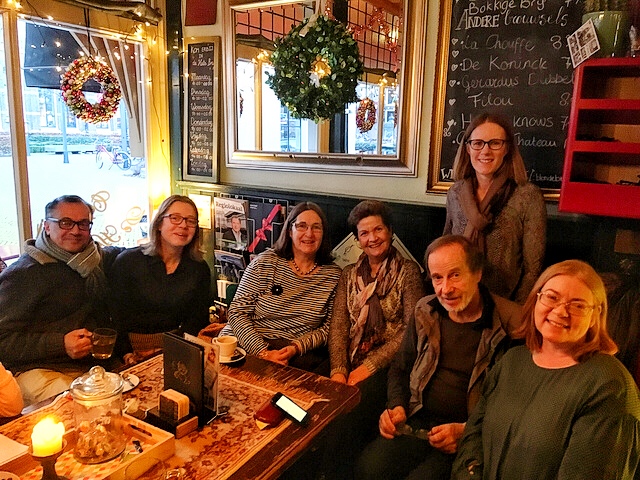
In this blog series, we are highlighting the different Special Interest Groups (SIGs) SENSE has to offer. SIG meetings are open to all members, and guests are welcome to attend one or two meetings before deciding whether they would like to join SENSE. For upcoming SIG meetings, check the SENSE Events calendar. Contact the SIG convener for more information or to suggest a meeting topic. If you would like to start a new SIG, contact our SIG and Social Events Coordinator. In this edition, we talk to Eastern SIG co-conveners Sally Hill and Kumar Jamdagni.
Can you tell me a little about yourselves?
SH: I was born in Chile and educated in the UK, but moved to the Netherlands in 1990 to join my Dutch husband. We live in Zwolle and have two kids. I joined SENSE when I was starting out as a freelance medical translator back in 2009, which followed a career in science and education. I’m now a medical writer, editor and trainer in scientific writing. While my writing is mainly for the biotech industry, most of my editing and training clients are in academia.
KJ: I was born and bred in London and studied French at City of London Polytechnic (now London Metropolitan University) including a year’s internship in Montauban. With the UK under siege in the summer of ’81 (race riots, sky-high unemployment, Margaret Thatcher) I left for the US with a ‘go with the flow’ attitude. Little did I know that a year later I would be a homeowner in Zwolle, married to a Dutch woman, and teaching English at a language institute! I am currently a translator (Dutch to English) and editor (predominantly academic papers for publication).
What is the Eastern SIG and who is it for?
SH: It’s a regional SIG, so intended for SENSE members living in and around Zwolle. While it’s mainly a great opportunity to have a natter in English with colleagues – particularly appreciated by the lonely freelancers among us – we also share experiences and good practice. We sometimes have an invited speaker and otherwise come up with a theme or activity that is of interest to current members. Recent meetings have discussed levels of editing, time management, and a Brexit newsletter from the IND. Previous topics include the needs of beginners, networking, software, bookkeeping, marketing and workshops/courses that we have attended.
How did the Eastern SIG get started?
KJ: I was one of the founder members of the first SENSE SIG in the late 90s, along with half a dozen other SENSE members, including Dave Thomas and Tony Cunningham; but the driving force was Brenda McClean. Without her enthusiasm, organizing ability and vision, I’m pretty sure there wouldn’t be an Eastern SIG today. The emphasis then (as now) was on promoting professionalism in the field of English-language services, while not forgetting the skills required to run a business – think networking, bookkeeping, even pension schemes. I look forward to being an active member for many years to come.
How often does the Eastern SIG meet up?
SH: We aim to meet up about six times a year, alternating between formal morning meetings and Friday afternoon social get-togethers, although the Covid-19 pandemic has somewhat flummoxed our good intentions. The location varies, but is always within walking distance of Zwolle station. Our previous meeting in April had to be moved online, and SENSE’s first ever ‘editing slam’ generated quite a bit of attention. We had 16 SENSE members attending from all over the world, including the Netherlands, Australia, Switzerland, Germany and Spain! This just goes to show how the pandemic is actually bringing some of us closer together.
How many people generally attend Eastern SIG meetings?
SH: In-person meetings used to attract just six to eight people, but the online meeting in April was our busiest ever. Until it’s safe to meet in person again, we’ll be making use of Zoom to allow more far-flung members to join our meetings.
When and where will the next Eastern SIG meeting be?
SH: Although Kumar and I agree we’d much rather meet in person (it’s been too long!), it’s probably not yet wise. We’ll therefore be meeting online on Thursday 3 September from 14:00 to 15:00. SENSE member and freelance academic editor Dr Claire Bacon – based to the east of the Netherlands (in Germany!) – will be talking about her experience writing a blog and how it helped her expand her client base.
If you'd like to attend the next Eastern SIG meeting, be sure to sign up via the Events page!
